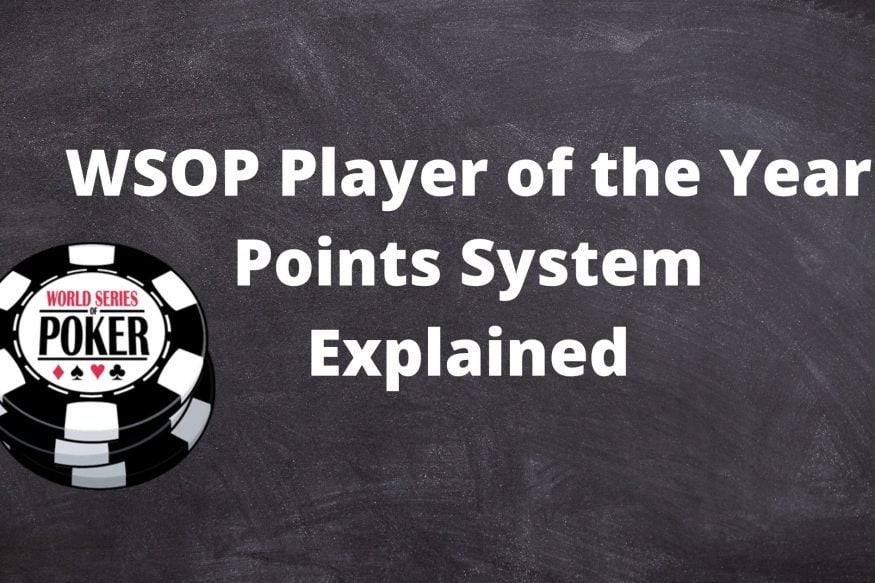Understanding the WSOP Player of the Year Points System

What Is the WSOP Player of the Year Race?
The World Series of Poker (WSOP) is legendary for its iconic bracelets, each representing the pinnacle of achievement for poker players worldwide. Yet, beyond the allure of individual tournament victories, the WSOP features a season-long contest that often escapes mainstream notice-the Player of the Year (POY) competition. This prestigious race tracks success across all eligible events in a given WSOP schedule, rewarding the competitor who achieves the greatest cumulative performance. Alongside the coveted POY title, the winner receives a cash prize, which reached $15,000 in 2021, as well as significant recognition within the poker community.
How the Player of the Year Leaderboard Works

The WSOP POY leaderboard is designed to evaluate not just standout moments but consistent excellence over the entire series. Each tournament that’s open to the general field (excluding certain specialty events) awards points based on player performance. In 2018, the organizers revised the structure to better reward tournament winners and distinguish between a simple cash and claiming a bracelet. These updates aimed to strike a balance between consistency and peak achievement, recognizing the challenges of designing a flawless system for such a complex, multi-event festival.
Calculating Points: The WSOP POY Formula Explained
Unlike fixed points charts, WSOP employs event-specific calculators-no public master spreadsheet exists. The formula itself draws inspiration from the World Series of Poker Circuit, but is scaled up for the typically much larger and more diverse WSOP main events. Here’s how points generally break down in the Circuit, serving as the foundation for the POY system:
- Winner: 50 points
- Second place: 37.5 points
- Third place: 30 points
- All cashing players: Minimum 2.5 points, with points increasing deeper into the tournament
These numbers increase substantially for the main WSOP events, but the proportional system remains.
Not all tournaments feed into the POY race. Only open events-those accessible to all players-qualify for points. Specialized events like Casino Employees, Seniors & Super Seniors, and Ladies tournaments are excluded, since not every player has access to these fields. This ensures an even playing ground for the competition.
With no public rulebook for precise awards in every scenario, players estimate their potential points by referencing past results or using the official POY points calculator provided on the WSOP website.
Key factors that determine the number of points awarded in each event include:
- Number of tournament entries (larger fields generally create bigger points pools)
- Buy-in amount (higher buy-ins mean more points, giving high-rollers an advantage)
- Finishing position (tournament champions see a much greater points boost)
For example, winning a high buy-in event with a small field will often earn more points than winning a large-field, low buy-in event. Additionally, each tournament winner secures double the points of the runner-up, meaning first place results are highly influential on the final standings.
The Impact of the Current POY System in Action
The 2021 WSOP season dramatically showcased how the POY system rewards certain types of success. Poker legends Phil Hellmuth and Josh Arieh both demonstrated outstanding skill, but the deciding factor became bracelet wins. Hellmuth’s record included a victory, two runner-up finishes, and numerous deep runs. Despite his achievements, Arieh clinched the title by capturing two bracelets compared to Hellmuth’s one. The difference between second and first place in tournament outcomes proved decisive under the POY model.

This structure has drawn criticism for sometimes under-rewarding consistency and overvaluing peak successes. While both Hellmuth and Arieh were worthy finalists, the system’s focus on first-place results meant that transforming any of Hellmuth’s second-place showings into a win could have reversed the outcome.
Why Designing a Perfect POY System Is Challenging
The quest to build a truly fair Player of the Year system is endlessly debated in poker circles. Should consistency be king, or should an extra emphasis go to singular standout victories? Balancing these interests is no small feat.
Rewarding relentless consistency seems logical-players who repeatedly finish deep demonstrate undeniable skill and determination. On the other hand, tournament poker has always reserved its greatest praise and reward for champions. The POY race mirrors this spirit, giving double points to winners and leaning towards those who can secure the final victory.
The system has also come under scrutiny for its handling of high buy-in, small-field tournaments. A small, elite field makes a title statistically easier to win, but the points on offer can rival or surpass those from enormous multi-thousand-player events. Some see this as skewing the competition towards players with the bankroll for these high-stakes entries. Yet, the prestige surrounding the POY race arguably justifies its focus on the absolute top echelon of competitors.
Takeaways from the 2021 Player of the Year Race
To better grasp the point allocation and competitive landscape of the POY leaderboard, it's crucial to recognize the main influencers:
- Tournament field size-the more players, the larger the potential points pool.
- Event buy-in level-higher buy-ins mean more points up for grabs.
- Final placement-most notably, winning a bracelet is critical.
It’s worth noting that while most years include both the US-based and WSOP Europe results, the 2021 POY tally was limited to US events due to logistical and health concerns. In other seasons, players could accumulate POY points at WSOP Europe stops to supplement their Vegas scores.
Conclusion: Is the POY Formula Fair?
After repeated adjustments and plenty of feedback, the WSOP’s POY points system stands as a strong, albeit imperfect, attempt to crown the year’s most successful competitor. While every approach inevitably spurs debate-especially among those who narrowly miss victory-it does continue to reward remarkable achievements across the most prestigious events in poker. With evolving participation, field sizes, and player strategies, future adaptations are possible, but for now, the POY title remains one of the game’s greatest honors.













